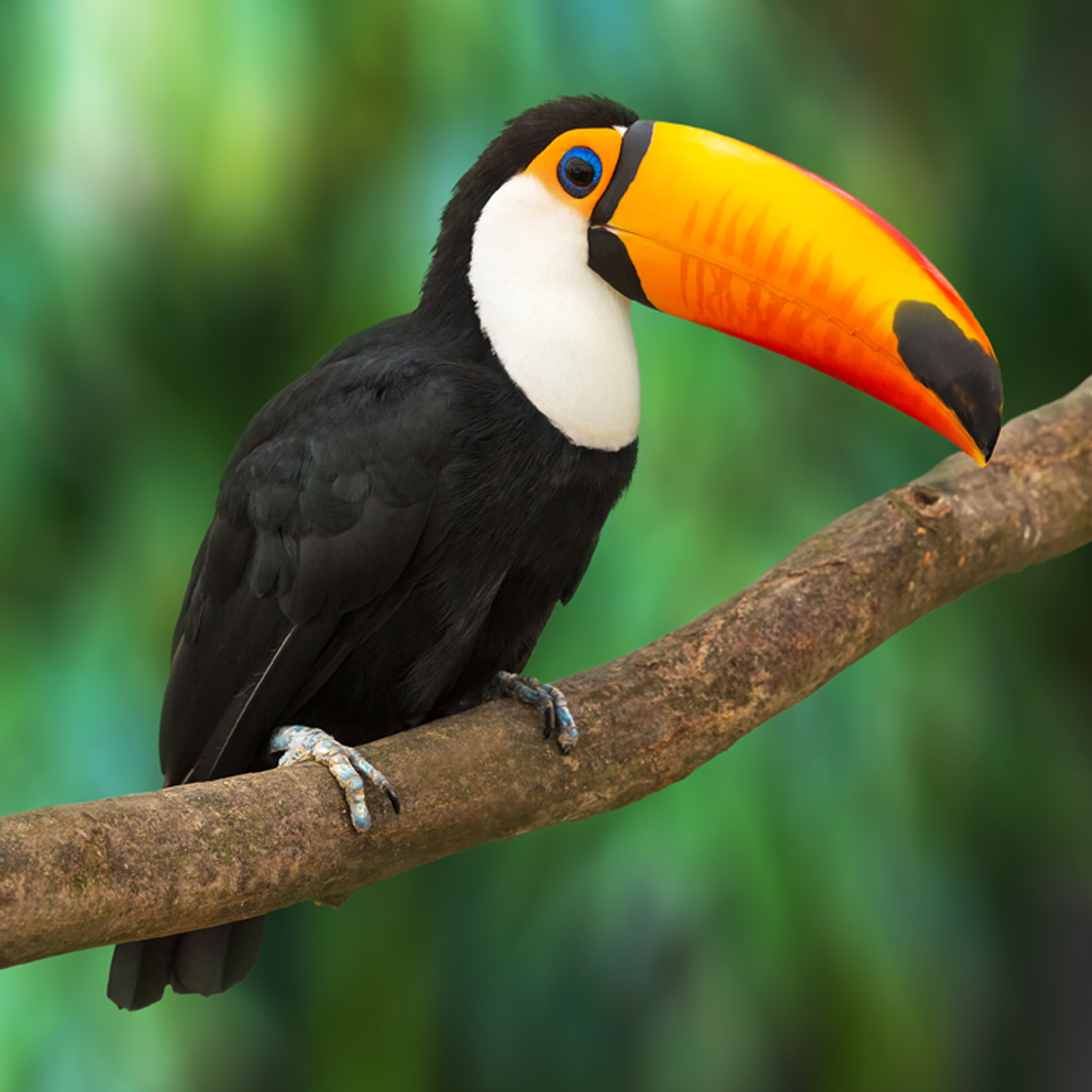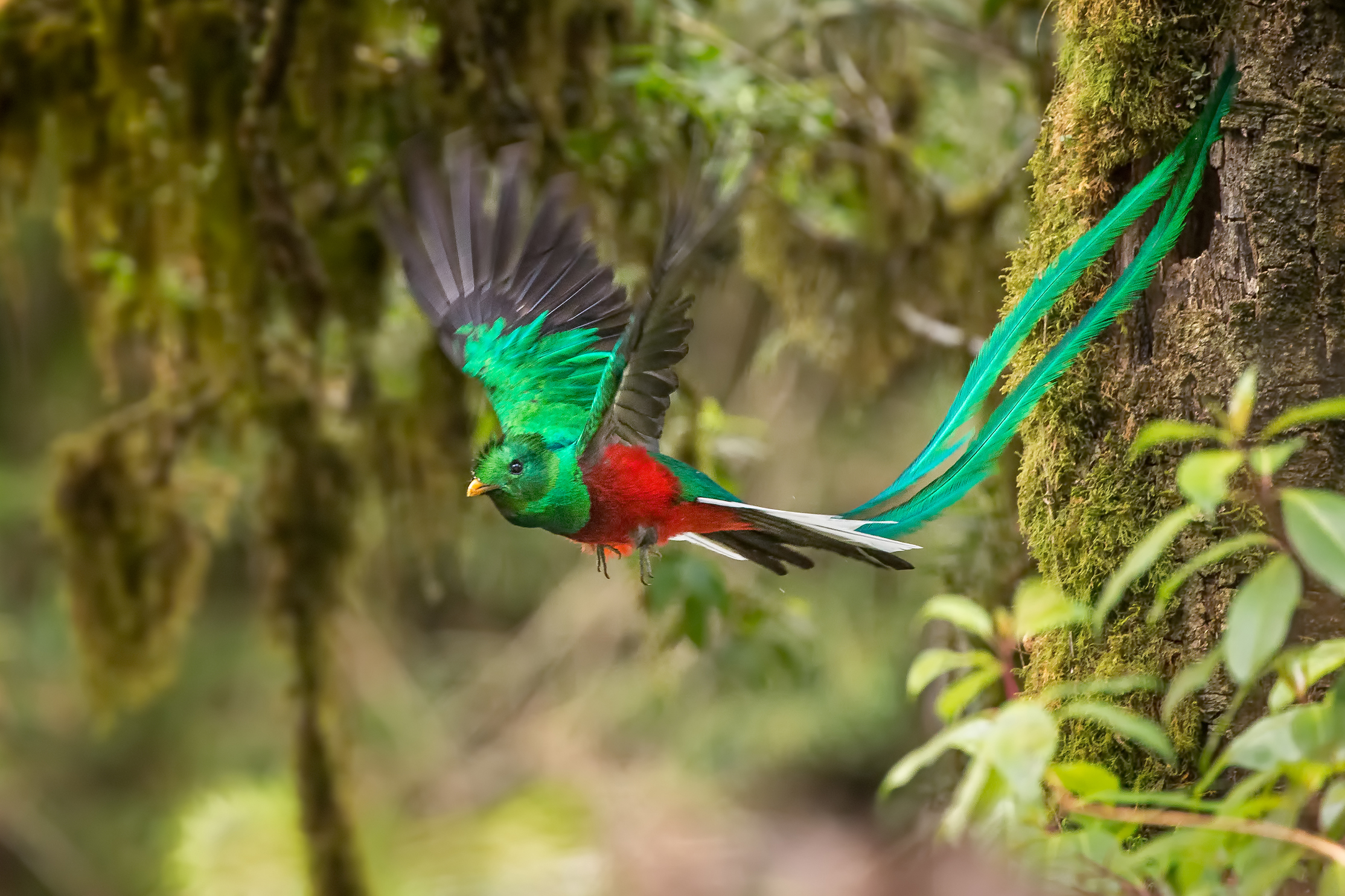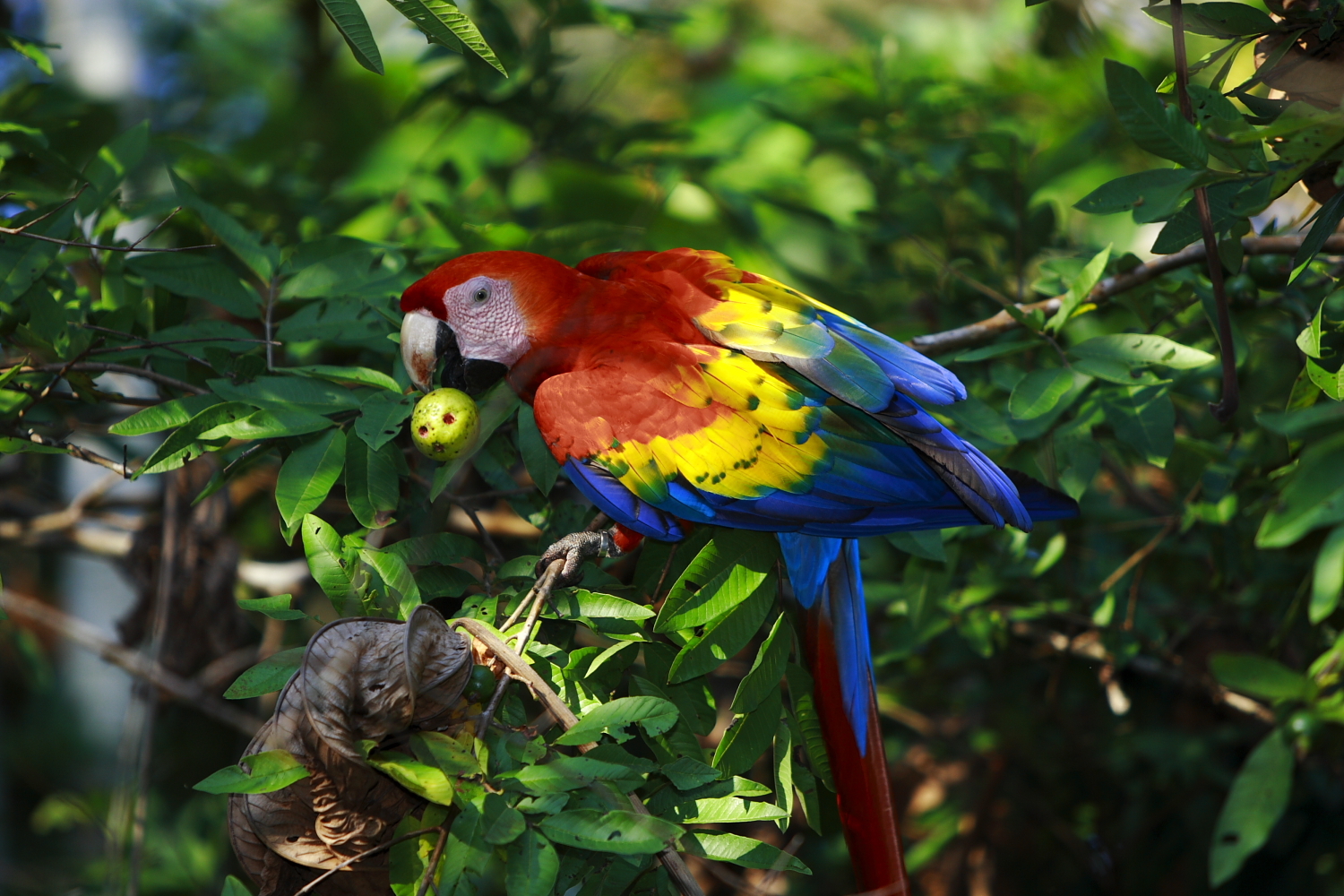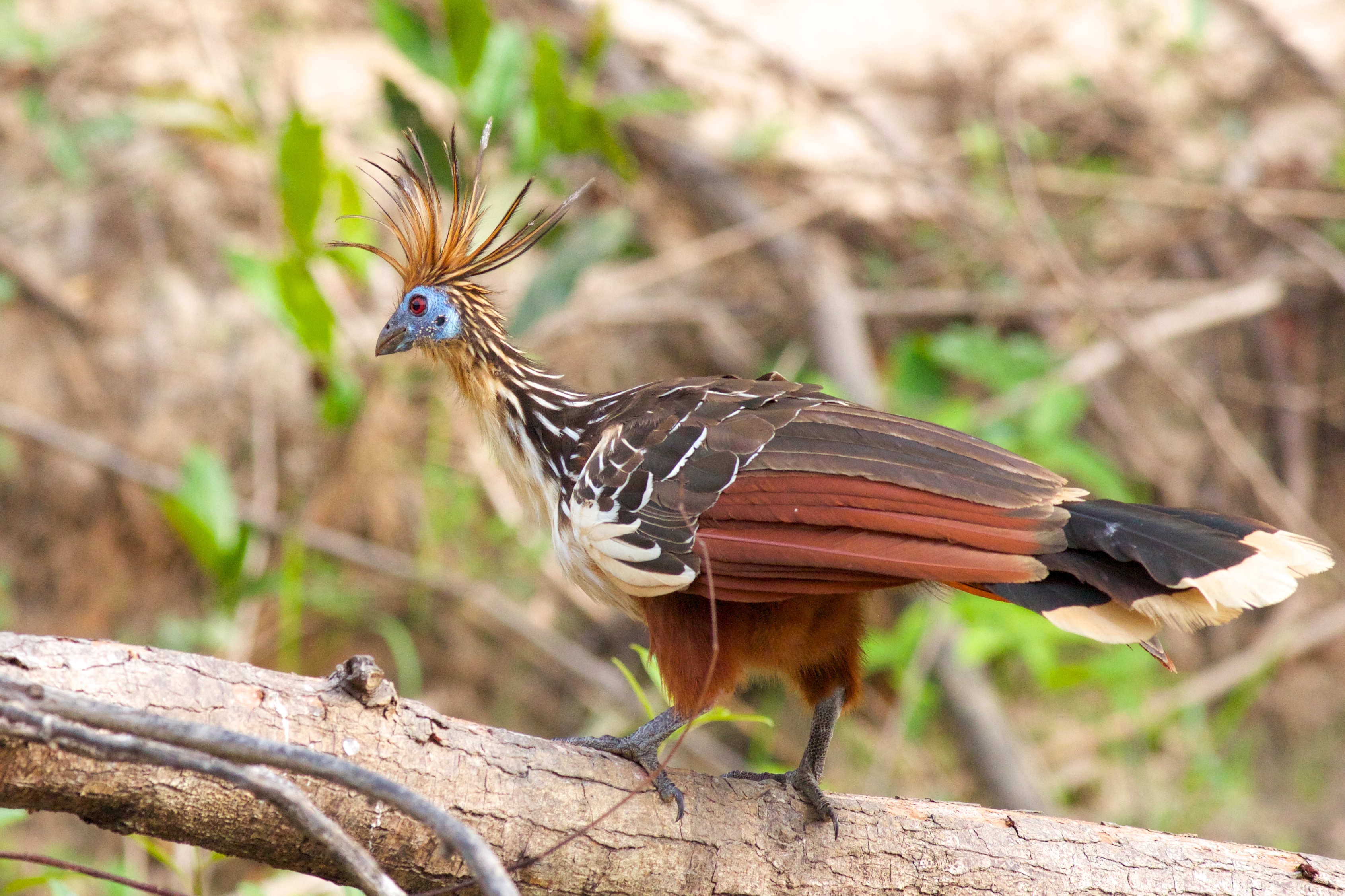Birdwatching in Latin America is an activity that even the most half-hearted nature lover is guaranteed to enjoy. Birds in this part of the world are renowned for their bright colours and elaborate plumage, and a sighting of some of the region’s beautiful birds is likely to be a highlight of any trip.
Latin America is a great destination for a family holiday and wildlife spotting can be an unforgettable experience for the little ones. Print the colouring page below and get your kids excited about these five birds they could encounter in Latin America!
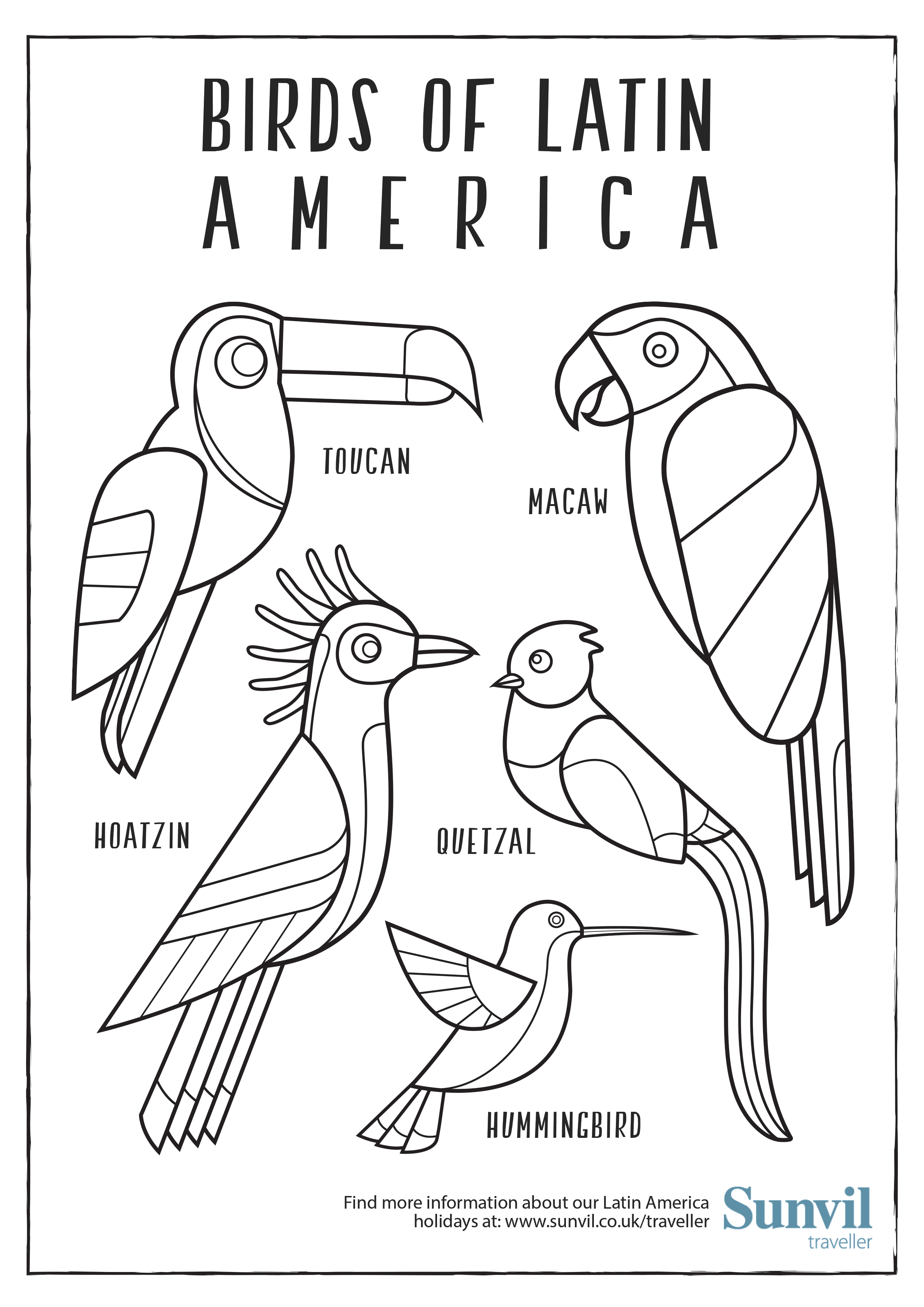 Download the colouring page as a printable PDF>
Download the colouring page as a printable PDF>
Toucans
Found in rainforests anywhere between Mexico and Argentina, toucans are best known for their banana-shaped bills, which in adults can be up to 8 inches in length. These brightly-coloured bills are perfect for picking fruit and berries from the jungle bushes. While a toucan’s bill might look like a formidable weapon and its appearance is thought to deter many potential attackers, it is in fact a hollow structure made from light bone and wouldn’t be all that useful in a fight with another bird.
Male and female toucans have an elaborate courtship ritual, where they throw berries to each other and catch them in their bills.
Quetzals
One of the world’s most beautiful birds, quetzals can be seen in the tropical cloud forests of Central America, from Mexico to Panama. While their feathers are strikingly colourful at any time, it is the males who steal the show during mating season, when they develop tails of feathers which can grow to a metre in length.
A quetzal’s diet is made up of fruits, insects and even small frogs. It is a sacred symbol in both the Aztec and Maya cultures, and while the quetzal is most commonly seen in Costa Rica it is also the national bird of Guatemala, where its name has been adopted for the main unit of currency.
Macaws
Recognisable as the brightly-coloured parrots that can sometimes be seen as house pets, these highly intelligent birds are found in jungles throughout Latin America. Their strong beaks can break the shells of fruits and nuts and help them catch insects. Macaws sleep at night and tend live in social groups of around 30 birds, communicating via complex and noisy squawks which ring around across the rainforest.
For many centuries macaws have been hunted for their bright feathers, which are considered very important in indigenous tribal cultures.
Hummingbirds
One of the most easily-spotted of Latin American birds, these delightful little creatures are often seen around flowers, feeding continuously on nectar, along with any spiders or insects that might come their way. They appear to be in almost constant motion and with a heart rate of over 1000 beats per minute and the fastest wings of any birds in the world, it’s not surprising that around 30% of their body weight is made up of muscles in and close to their wings.
Hummingbirds can move their wings independently in a full circle, a trait which allows them to fly backwards, sideways, up and down, or even to hover in the same spot.
Hoatzin
Unlike the other birds mentioned here, hoatzins are hardly considered beautiful. They are commonly known as stinkbirds, as their herbivorous diet results in them giving off a smell similar to cow dung. Hoatzin live only in South America, typically around the Amazon and its tributaries. They look a bit like pheasants and although they have wings, they rarely fly, preferring instead to sit on trees near the river digesting their food until they are ready to forage again. Hoatzins are highly social, living in large groups and rearing their young within the flock.
Discover more about our adventure holidays in Latin America>
Have you been birdwatching in Latin America? Share your experience with us in the comments section below or on our Facebook and Twitter profiles.

